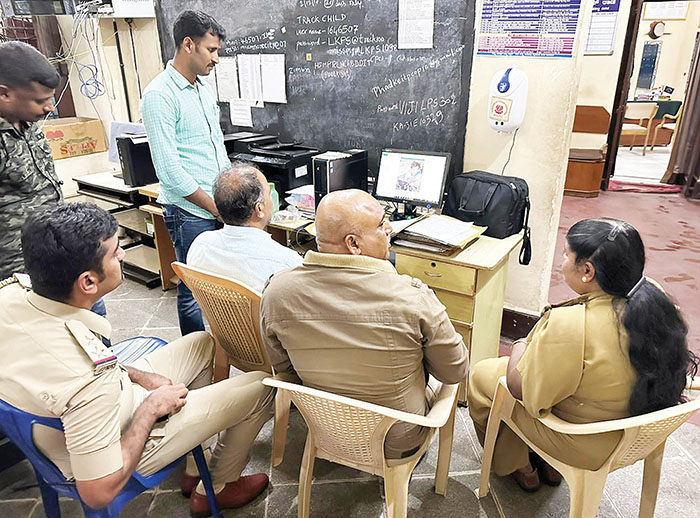Database created by Lashkar Police already has 6,000 suspects with photos, fingerprints
By S.T. Ravikumar
Mysore/Mysuru: Even as the Karnataka High Court has directed the State Police to establish a task force for digitising the entire investigation process and have a database of persons or suspects having a criminal record, the Lashkar Police Station in the heart of the city has already taken the initiative and is building a repository of criminals and people who have suspicious backgrounds.
As part of the initiative, Mobile Crime and Criminal Tracking Network and Systems (M-CCTNS) or fingerprint live scanners in the M-CCTNS app are used to trace the criminal records of suspects.
The second initiative is night suspect mapping or crime mapping where suspects are traced to a particular area and mapped for future references.
Already, photos and details of over 6,000 persons including 80 persons from Kolkata have been stored in the crime repository. These initiatives have been taken to prevent crimes after 11 pm where the Police suspect the involvement of outsiders who make a quick getaway from the city after committing the crime.
Easy identification
Following the directive of City Police Commissioner Dr. Chandragupta, teams have been formed whose exclusive task is to go on rounds 24×7 and collect information about criminals masquerading as local residents and suspiciously moving people. Details and photographs are collected to build the repository to help the investigators probe criminal activities and also help victims identify the criminals through their photos in case of crime.
The initiative has been taken up at Lashkar Police Station that is a hub of human activity as it is centrally located with over-arching areas like KSRTC Sub-Urban Bus Stand, City Bus Stand, Railway Station, Irwin Road, Gandhi Square, Halladakeri, Mandi Mohalla, Devaraja Mohalla, Nazarbad and Lakshmipuram.
Inspector P.P. Santhosh and his team of Sub-Inspectors Gautham Gowda, Dhanalakshmi and the crime wing staff are involved in the operation where information is collected along with their records like Aadhaar Card, addresses and fingerprint records.

Crime prevention and detection
While the M-CCTNS has provided thousands of portable fingerprint information systems to Police Stations across the State, crime mapping is also expected to yield positive results in crime prevention and detection.
Crime mapping is done physically to help trace suspects and ascertain their modus operandi. It helps the Police determine areas where a particular group of suspects or individuals are active. On the basis of collated information, Police officials trace local suspects and enhance patrolling in the affected areas, especially after 11 pm.
Information gathering
It is a traditional practice of information gathering where a technical database is built after rounding off people who are moving suspiciously after 11 pm. Night patrolling staff generally cover all major roads and areas that are vulnerable to crime. However, the staff do not cover small roads or by-lanes.
Thus, these areas small lanes remain neglected during night patrolling and crimes take place. The Police have changed the approach now and even small lanes are patrolled and the suspect data is collated, officers said.
Generally, criminals masquerade as auto drivers especially in deserted areas like the Ring Road and they dump the vehicles in closed and secluded places and flee after crime. The Police is also building a database on auto drivers who are found roaming around in the night on streets. The database includes their photos, fingerprints and the photos of the autos. Pre-paid autos at designated counters are spared, officers said.








Recent Comments